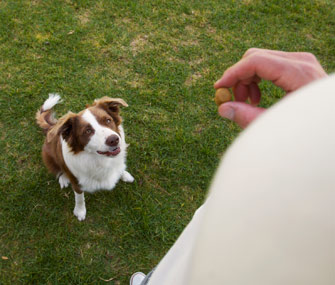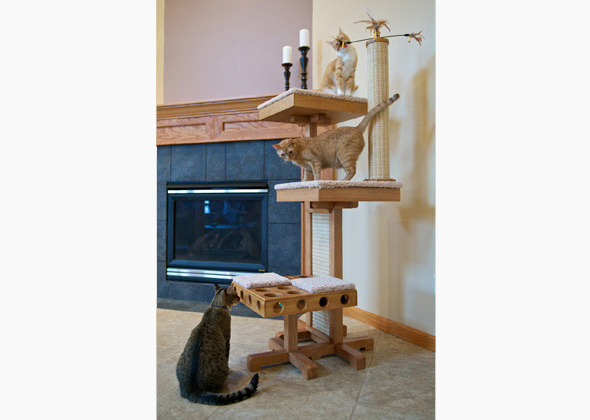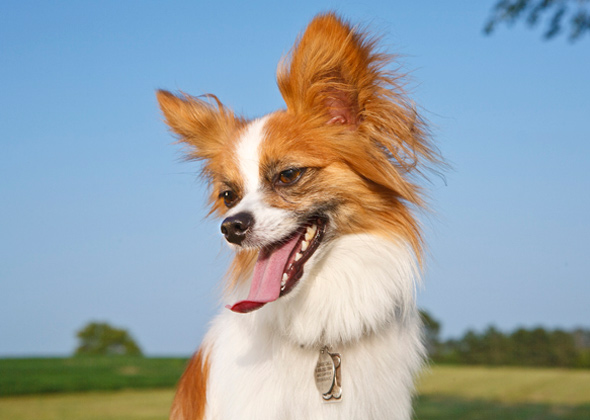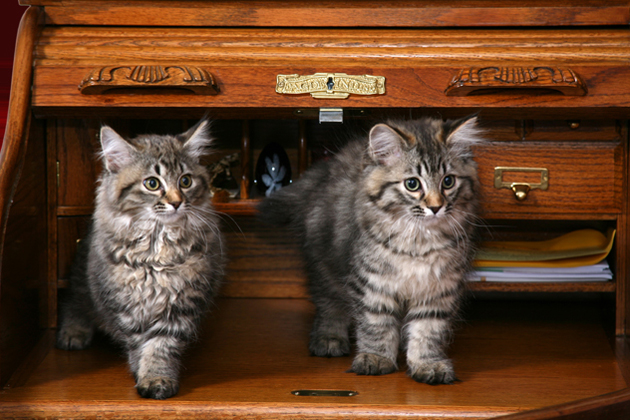Teach Your Dog to Sit
Published on November 05, 2012

One of the most important behaviors you can teach your dog is sit. Sitting has many uses; it can replace unwanted behavior and can keep your dog politely at your side. Sitting can also become your dog’s way to say “please” for things he wants. Teaching your dog to sit helps to increase the calm, controlled behavior many pet parents want while decreasing the out-of-control, hyper behavior that many dogs display.
While the benefits of teaching sit are numerous, the methods to get a dog to sit can vary widely. In my training, I use two dog-friendly, efficient and practical ways to teach dogs to sit when asked.
Method One: Capturing
Start with your dog on leash in a non-distracting environment, such as your living room when you’ve settled down on the couch for the evening. Wait for your dog to offer a sit on his own. When he goes into a sit, click or say “good” as his bottom hits the floor and treat immediately after. You may want to give him several treats while he is sitting to encourage staying in that position longer instead of jumping back into a standing position.
If your dog remains in the sitting position, you can tell him it’s all right to get up and move by saying “OK” and tossing a treat out far enough that he has to stand to get it. When he finishes the treat and turns back toward you, once again wait until he goes into a sit and immediately mark it with a click or “good” and a treat.
Once your dog is readily going into a sit with each repetition, add a verbal cue. Say "sit" as his bottom moves toward the floor. As you repeat this, start to give the cue when you anticipate him being about to sit instead of when he's already doing it. Once your dog responds by sitting in response to the cue you have introduced, begin treating only the sits that you asked for and no longer rewarding the ones that were not requested.
Method Two: Luring
The second approach is to teach your dog to follow a treat into a sitting position. Hold the treat out in front of your dog’s nose. Move the treat slightly up and back, so that his nose follows it; click or say “good” when this happens. Gradually move the lure farther back so that his head tilts upward and his bottom starts to fold under him. Click or say “good” and reward with a treat when his bottom starts to tuck underneath him.
Next, get your dog into a full sitting position by marking the moment that your dog’s bottom touches the ground. Treat him while he remains in the sitting position. To get him out of the sit, you can toss a treat if needed.
The problem with using a lure is that many dogs become dependent on you having a treat in your hand. Luckily, you can prevent this problem by fading the food lure away. Start by using the food lure in your hand to get the dog into the sit and marking with a click or “good” as his bottom hits the floor. Immediately reward him with another treat out of the treat bag, using your other hand, but don’t give him the treat from the original food lure hand. Once you are successful at that, hold your lure hand so that it is shaped like you have a treat in it but with no treat present.
When you get a successful sit, mark with a click or "good" and reward him while he's in the sitting position. Start to decrease the amount of hand signal needed to get the sit by decreasing the hand signal used each time you ask for a sit; eventually, you should go from extending your hand all the way up and back as you did with the lure to simply using a small signal, such as your hand turning upward. If you want to add a verbal cue, simply say "sit," wait one second and then present your hand signal, which will get your dog anticipating the signal that follows; he will respond to the voice cue itself. If you are saying the word “sit” at the same time that you offer the hand movement, most often your dog will pay attention only to the hand movement and not the voice cue.





